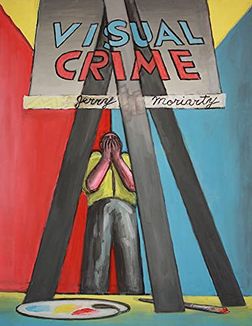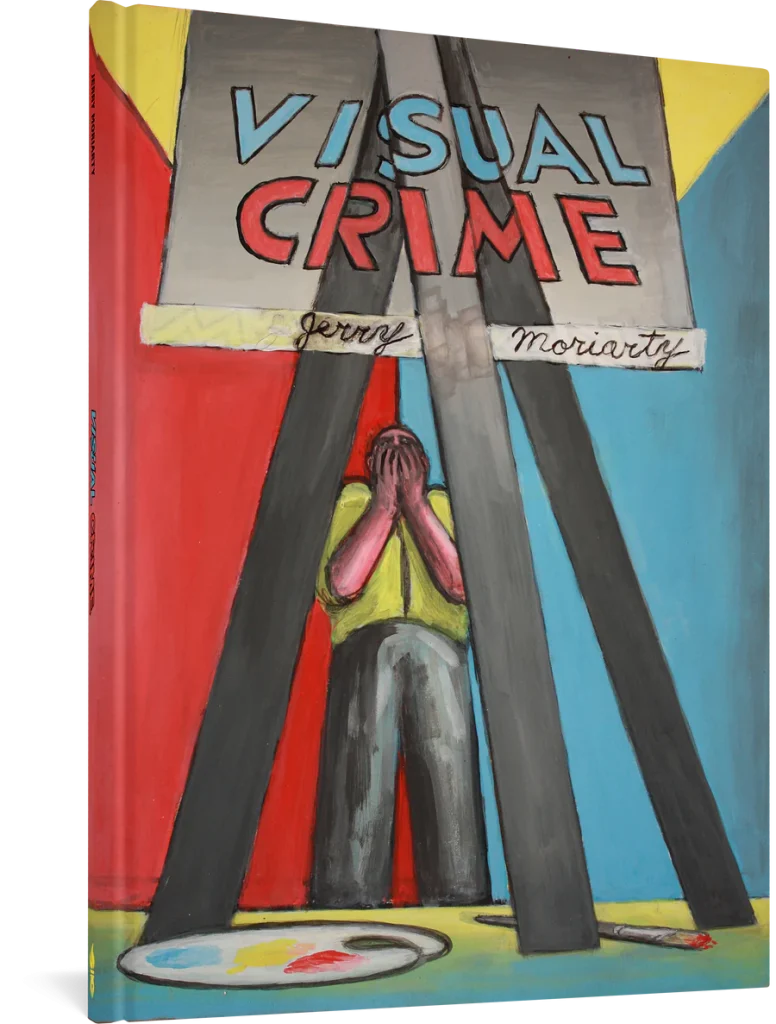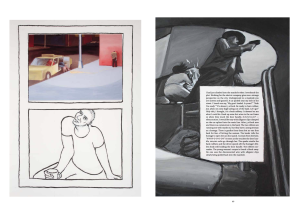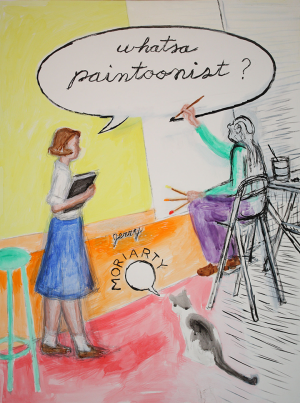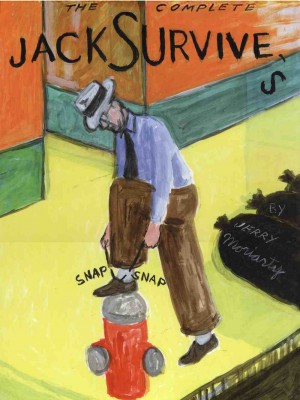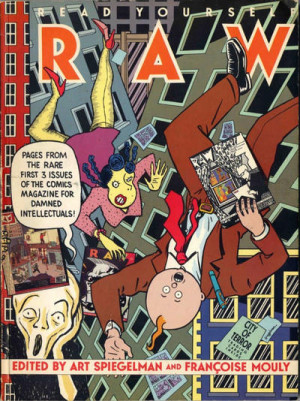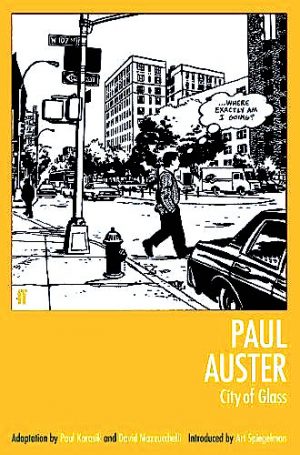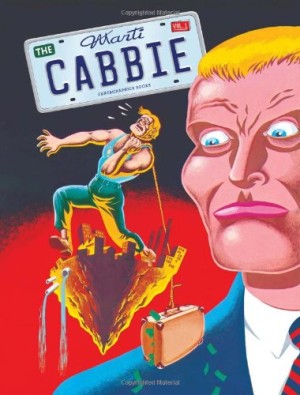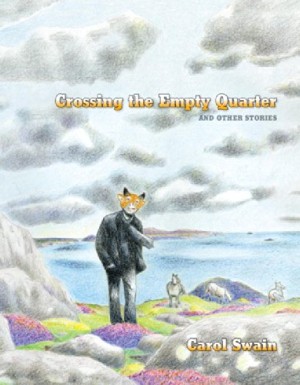Review by Graham Johnstone
The younger Jerry Moriarty was a painter making comics, and it showed in his best remembered work Jack Survives, a series of minimal vignettes inspired by memories of his father in mid-Century, middle America. His rendering style involved Indian Ink sketches, overpainted with white acrylics then more ink. The grungy result fused the two poles of mid century American art: Edward Hopper‘s elegant channelling of the built environment, and Abstract Expressionism’s assertive application of paint,
Moriarty’s 2017 Whatsa Paintoonist? explicitly confronted the collision of popular and fine art. Visual Crime, from four years later, (and four decades after Jack Survives), continues the theme, with a significant addition.
Visual Crime’s cover signals a metafictional deconstruction of art. The easel and palette are a classic symbol of fine art, while the black and three primary colours upon the palette evoke the four printers’ inks most naked in comics. Other elements like the red paint on the brush, the figure’s shock, and the corpse-eye-view, suggest the addition of crime.
At first glance, the crime seems spread over two black and white novellas, some short colour comics, and a series of large paintings each with a headline title and text micro-fiction. However, there’s no contents page, suggesting the book should be considered not as a collection, but a single graphic novel.
The protagonist is ‘Rotart Sulli – Illustrator’. The name and occupation form a palindrome, and ironically hint at his fallen status – ‘rot’, ‘art’, ’sully’, and ‘traitor’. The book begins with a commission for Visual Crime magazine requiring Sulli to “get a room at Hotel Ace and wait for the messenger… ” This mysterious scenario provides a frame for nested stories that can be read as Sulli’s commissions for the magazine.
The first of these is in rough line-art, and shows a man secretly painting in a basement boiler room. He hides while the janitor throws cuddly toys into the boiler. It’s a play on high and low status in the arts (and in occupational status). Initially an amusing conceptual comic, the two men come face to face, turning the story form ‘visual’ to crime, and potentially from comedy to tragedy.
Visual Crime was Moriarty’s name for a handful of micro-stories, originally published in 1990s anthology Gin and Comix. Each comprised a two page spread with an illustration, text box, and headline title like ‘Meter Man’, or ‘Killer Waitress’. Here they’re re-contextualised as Sulli’s commissions. Painted in a similar style to the colour sequences, they’re reproduced in greyscale. What may have been a requirement of the original format, aptly evokes film-noir’s moral and visual shades of grey. Moriarty’s rendering shuns the typical slickness of ‘illustration’, instead delivering arresting compositions that convey a whole story with characters, action, and incidental details, like a toppled cup dripping coffee from a table. His noirish camera angles view events down stairwells, through swinging diner doors, and (pictured, right) from a ‘Man Hole’ . The visuals and crime fuse powerfully.
A last novella pulls threads together, telling the story of Sulli’s creation of the final single-spread story (pictured, left), and ending with the reappearance of a poetic image from the start.
Visual Crime, is high art in a loving pastiche of crime fiction and comics. It won’t be for everyone, but there’s plenty of artistry, narrative, and metafictional mischief, packed into these hundred pages. They’re easy to read, and appealing to reread.
Moriarty (born 1938), must be older than his initial inspiration Jack. His fans will be glad Jerry survives, and welcome this latest (but hopefully not last) piece of his unique artistry.
